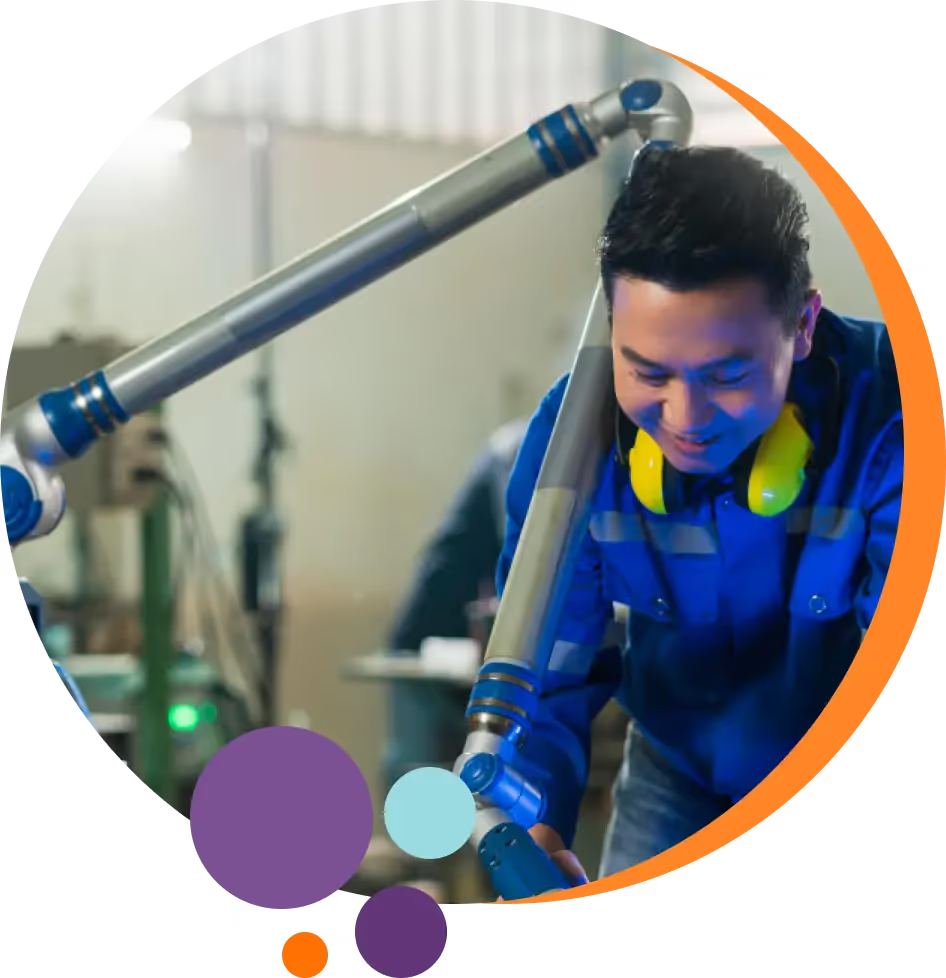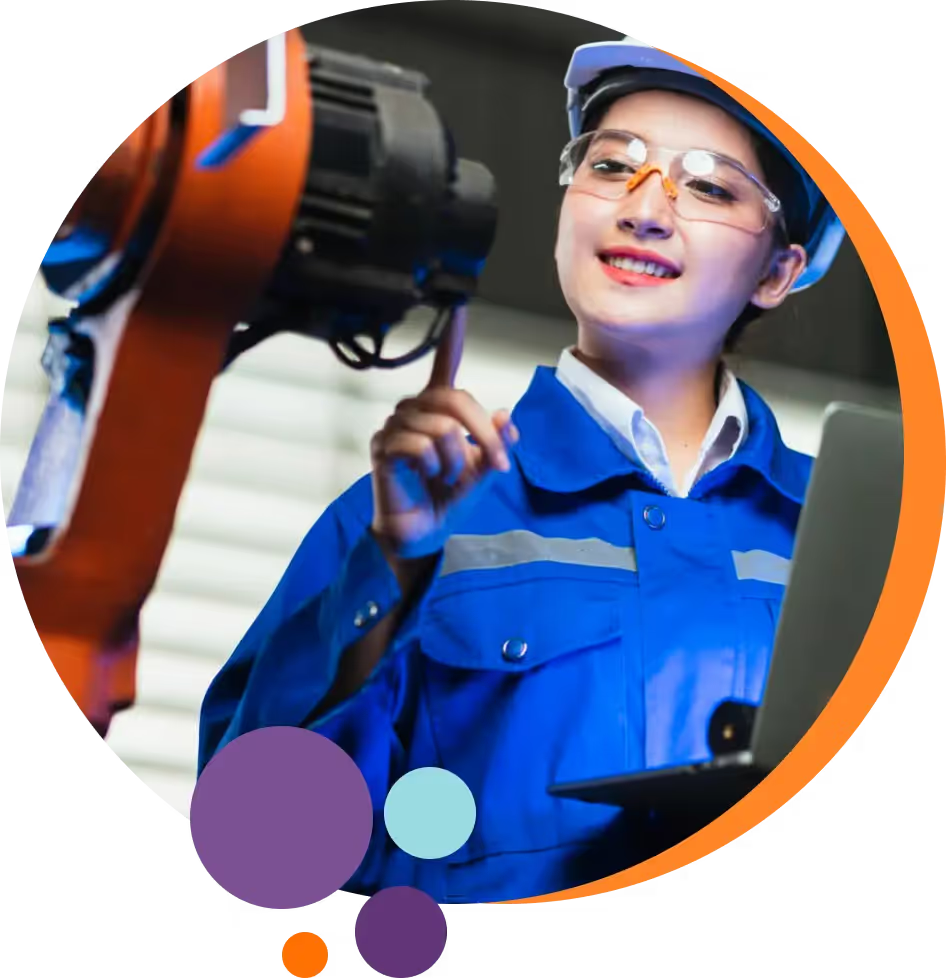Technician Professions Least Affected by AI
While about a fifth of all workers in the US work at jobs with high exposure to AI, most technician roles are uniquely positioned to defy this trend. That is because these roles require physical intervention and real-world problem-solving. As such, they offer a level of job security that is rarely matched in the rapidly automating global economy.
And it’s not just about physical involvement: technical jobs require a blend of analytical skills and practical expertise that today’s machines simply cannot replicate!
Let’s now dive into the six technician roles that are immune to the advances of AI and automation. We analyze each role in detail, study their projected growth trends, and explore why they remain irreplaceably human.
1. Maintenance Technicians
Maintenance-technician is an umbrella term that includes industrial machinery mechanics, machinery maintenance workers, and millwrights. Together, these roles form the backbone of most modern manufacturing and production industries.
Maintenance technicians are responsible for installing, maintaining, and repairing vital industrial machinery and equipment. In 2022, this critical line of work accounted for 507,900 jobs, with a promising growth projection of 13% over the next decade. That is significantly higher than the average growth rate for all occupations.
To add to that, around 49,100 maintenance technician jobs are expected to open up every year till 2032.
Despite the rapid adoption of automation and AI, the nuanced and adaptive nature of a maintenance technician’s work makes it resistant to complete automation.
While some have envisioned fully automated ‘lights out’ factories in the future (which can operate in the dark because they require minimal or no human intervention), the reality is that such capabilities are still very much in the realm of science fiction.
Even if they were hypothetically possible, such environments would lack the flexibility and creativity provided by human technicians. The critical thinking and urgent problem-solving required to troubleshoot and maintain complex machinery is not something AI can fully replicate.
Rather than replacing maintenance technicians, therefore, AI and automation are increasingly being used to enhance their jobs. Techniques like predictive and prescriptive maintenance leverage AI to forecast equipment failures and guide repairs. But for now, they are still dependent on the human element for implementation and oversight.

2. Semiconductor Industry Technicians
These highly skilled workers are essential in both the design and manufacturing phases of semiconductor production.
As of 2023, the semiconductor industry employed approximately 345,000 workers in the US, with about 68% (236,000) involved in the direct fabrication of semiconductor chips or the manufacturing of specialized machinery used in fabrication. The remaining 32% (109,000) were design workers focused on semiconductor design and the development of specialized software tools.
The semiconductor industry is on the brink of substantial growth and is expected to add nearly 115,000 new jobs by 2030. There is, however, a looming challenge: about 67,000 of these jobs could remain unfilled due to the current rates of degree completion.
This projected shortage highlights the increasing demand for skilled technicians who can navigate the complexities of semiconductor production—a field where precision is paramount and even the smallest errors can have significant implications.
The exacting precision required in this sector makes these technician roles less vulnerable to replacement by AI. While AI can assist in many aspects of the design and fabrication process, the high-stakes decisions and adjustments made by human technicians are irreplaceable.
Here’s how AMD senior vice president Ivo Bolsens uses the analogy of a trip to Austin to describe the limits of AI in the semiconductor industry:
"I fly to Austin, take a car to the parking lot of the office, then I walk into the building. AI is the flying; it gets you quickly very close to where you need to be. From there, you have to have more traditional ways of doing things. That’s the opportunity AI delivers to chip designers. It just won’t take the last steps from parking lot to office.”
The federal government recognizes the shortage of semiconductor technicians. As such, it has proposed a $52.7 billion investment to drive demand for highly trained workers throughout the industry’s complex production processes.
Semiconductor industry technicians represent a critical part of the workforce where human skill and judgment are indispensable. As the industry continues to evolve, the role of these technicians will only grow in importance.
.webp)
3. Radiologic and MRI Technologists
Radiologic and MRI technologists specialize in conducting diagnostic imaging examinations that are key to accurate patient diagnosis and treatment. They utilize sophisticated imaging technologies such as X-rays, CT scans, and MRIs to provide critical insights that guide medical decisions.
In 2022, this sector supported 264,100 jobs, with projections indicating a 6% growth from 2022 to 2032.
The high level of specialized knowledge required of radiologic and MRI technologists is evident from the stringent licensure and certification standards for these roles prevalent in most states. These standards ensure that radiologic and MRI technologists can operate complex machinery and interpret results with a high degree of accuracy and clinical insight.
The integration of AI into healthcare diagnostics is seen not as a replacement but as a complement to the skills of these technologists.
AI can enhance the diagnostic process by improving the precision and speed of image analysis, but it lacks the human touch necessary for patient interaction and the nuanced understanding of clinical contexts. Human technologists play an indispensable role in adjusting and interpreting diagnostic tests, managing patient care during imaging procedures, and ensuring diagnostic results are integrated effectively into treatment plans.
For instance, consider a scenario where an MRI scan indicates a possible brain anomaly. AI can pinpoint areas of concern quickly and accurately, but it's the technologist who assesses the quality of the images, takes additional scans if needed, and ensures the patient is comfortable and safe throughout the procedure. The technologist also works alongside radiologists to interpret the scans within the context of the patient’s medical history and arrive at a holistic diagnosis and treatment plan.
This blend of technical skill and empathetic patient care underlines the continued necessity for human expertise in radiologic and MRI imaging.
.webp)
4. Wind Turbine Technicians
Wind turbine technicians are key players in the renewable energy sector, responsible for servicing the giants that harness wind power on land and sea.
In 2022, the industry employed 11,200 individuals tasked with maintaining and repairing wind turbines. This role is expected to see explosive growth, with projections indicating a 45% increase in new jobs from 2022 to 2032.
Approximately 1,800 new openings for wind turbine technicians are also anticipated each year till 2032.
The work of wind turbine technicians is intensely hands-on and requires a blend of mechanical, electrical, and hydraulic knowledge - all of which are typically honed through postsecondary education and further refined via on-the-job training. It is very evident from the nature of their work - which involves climbing turbines, conducting detailed inspections, and performing complex repairs in demanding environmental conditions - why human intervention is indispensable in this field.
The maintenance and troubleshooting of wind turbines require a human touch for several reasons. Technicians must adapt to unpredictable conditions and solve unforeseen problems that may arise with sophisticated machinery. The sheer physical aspects of the job, which may include maneuvering heavy components and accessing hard-to-reach areas, cannot be effectively replicated by robots or automated systems.
Beyond that, the safety protocols and critical decision-making required during emergency repairs underline the irreplaceable value of human expertise in ensuring the efficient and safe operation of wind energy technologies.
.webp)




















.webp)
.webp)


